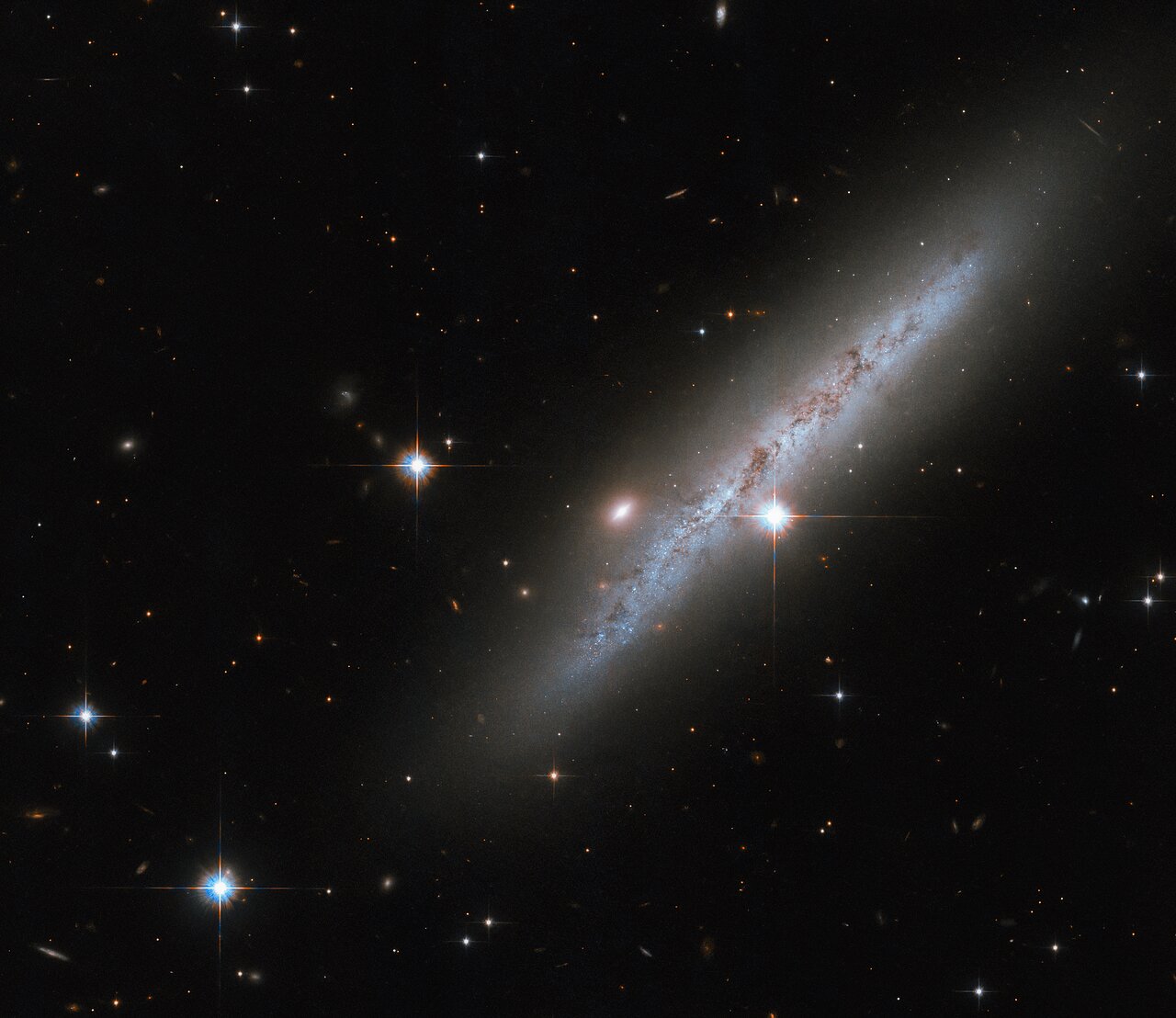Cosmos UGC 2890
The somewhat amorphous spiral galaxy UGC 2890 appears side-on in this image from the NASA/ESA Hubble Space Telescope, with bright foreground stars studding the image. This galaxy lies around 30 million light-years away in the constellation Camelopardalis. In 2009 astronomers spotted a catastrophically powerful supernova explosion in UGC 2890. While the supernova itself has long since faded from view, Hubble recently took a break from its regular observing schedule to inspect the aftermath of this explosive event. A Type II supernova is a spectacularly energetic explosion that marks the violent death of a massive star. As it runs out of the elements necessary to fuel nuclear fusion, the core of a massive star flickers out and stops producing energy. With nothing to support the crushing force of gravity, the core of the star shrinks and then suddenly implodes, leaving the star’s outer layers to collapse inwards and rebound out into space as a supernova explosion. This observation is one of many Hubble investigations of Type II supernovae. Astronomers turned to Hubble’s Advanced Camera for Surveys to explore the surroundings of Type II supernovae in the hope of discovering the ages and masses of stars in the neighbourhood. This will reveal insights into the types of stars that eventually create Type II supernovae, as well as revealing any stellar survivors of colossal supernova explosions. [Image description: A spiral galaxy is seen edge-on and tilted at an angle. The body of the galaxy is blue and obscured by threads of dark red dust, and it is surrounded by a pale glow. Three stars with prominent cross-shaped diffraction spikes are very bright in the foreground. The background is dark and sparsely-covered in small stars.]
